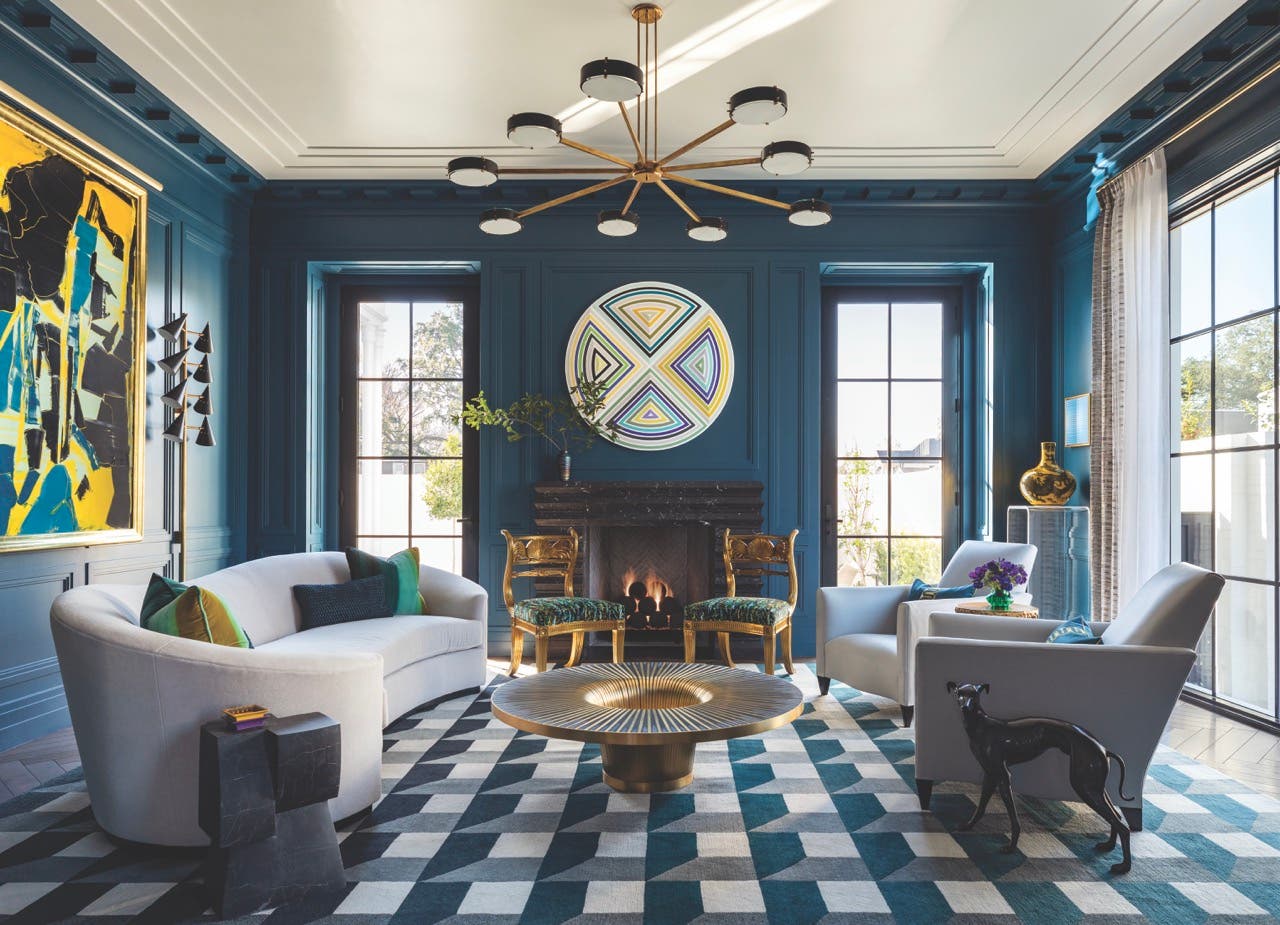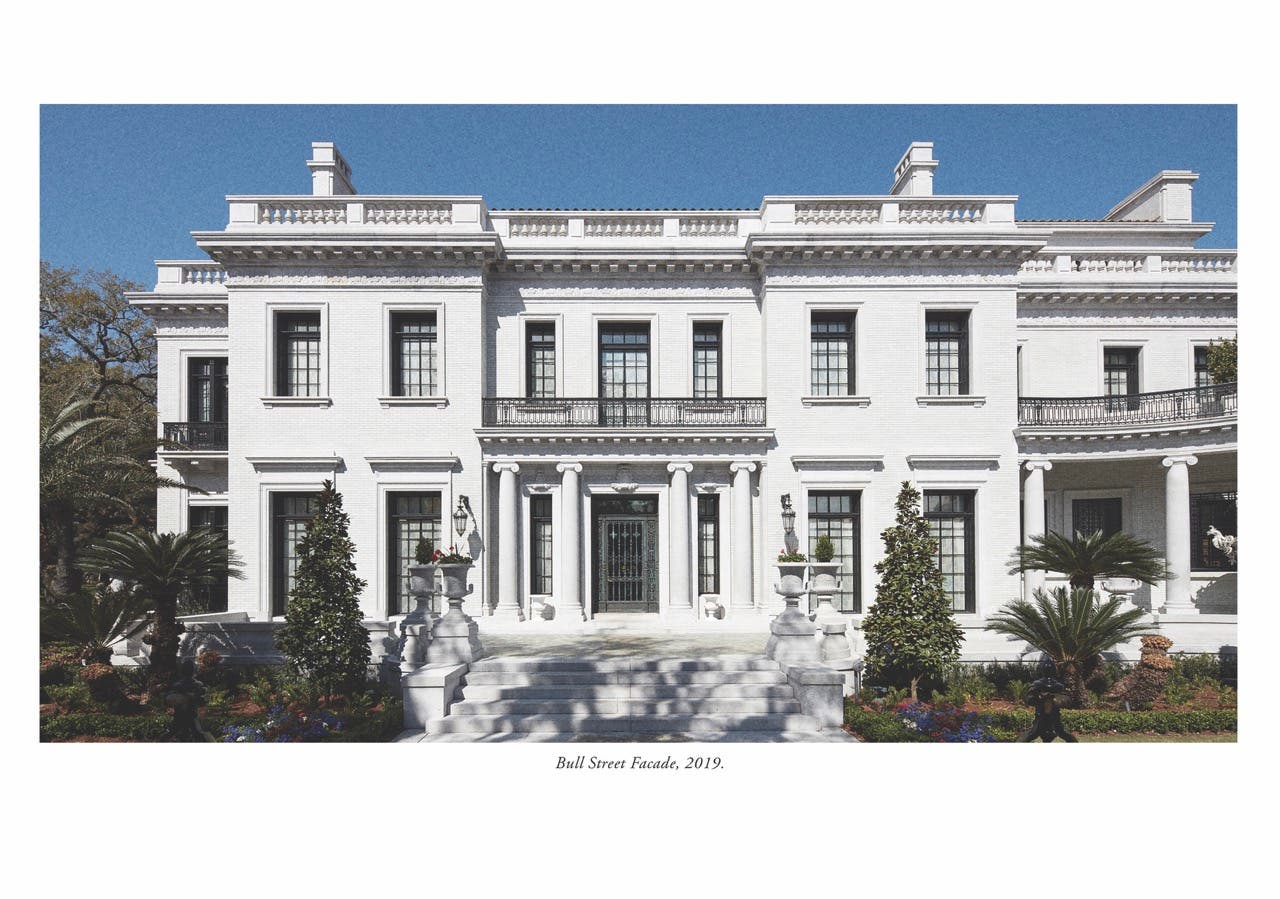
2025 Palladio Awards
Casa Blanca – Michael G. Imber Architects
The high-groined ceiling of the living
room showcases views of the desert
and sea. Below, the main entrance.
By a jumble of sienna-hued boulders etched by desert winds in Baja California, there rises Casa Blanca. Organic and sculptural, the White House represents the romantic vision of architect Michael G. Imber and the young San Francisco family who commissioned it.
“When I first met him, the husband, who was the U.S. ambassador to Austria, described his uncle’s villa in Sardinia and what it meant to him and how it grew out of the island itself. He wanted to re-create this feeling in a remote part of Mexico by building a Mexican house with European influences.”
The family had planned to gather art and furnishings in Europe so that the house, which they were using as a vacation home for multigenerational celebrations and reunions, would look as though it had been erected by one of their ancestors decades, if not centuries, before.
Inspired by the natural outcroppings of boulders on the property, Imber created an exotic masterpiece that’s as much organic sculpture as it is a beautiful, functional place to live.
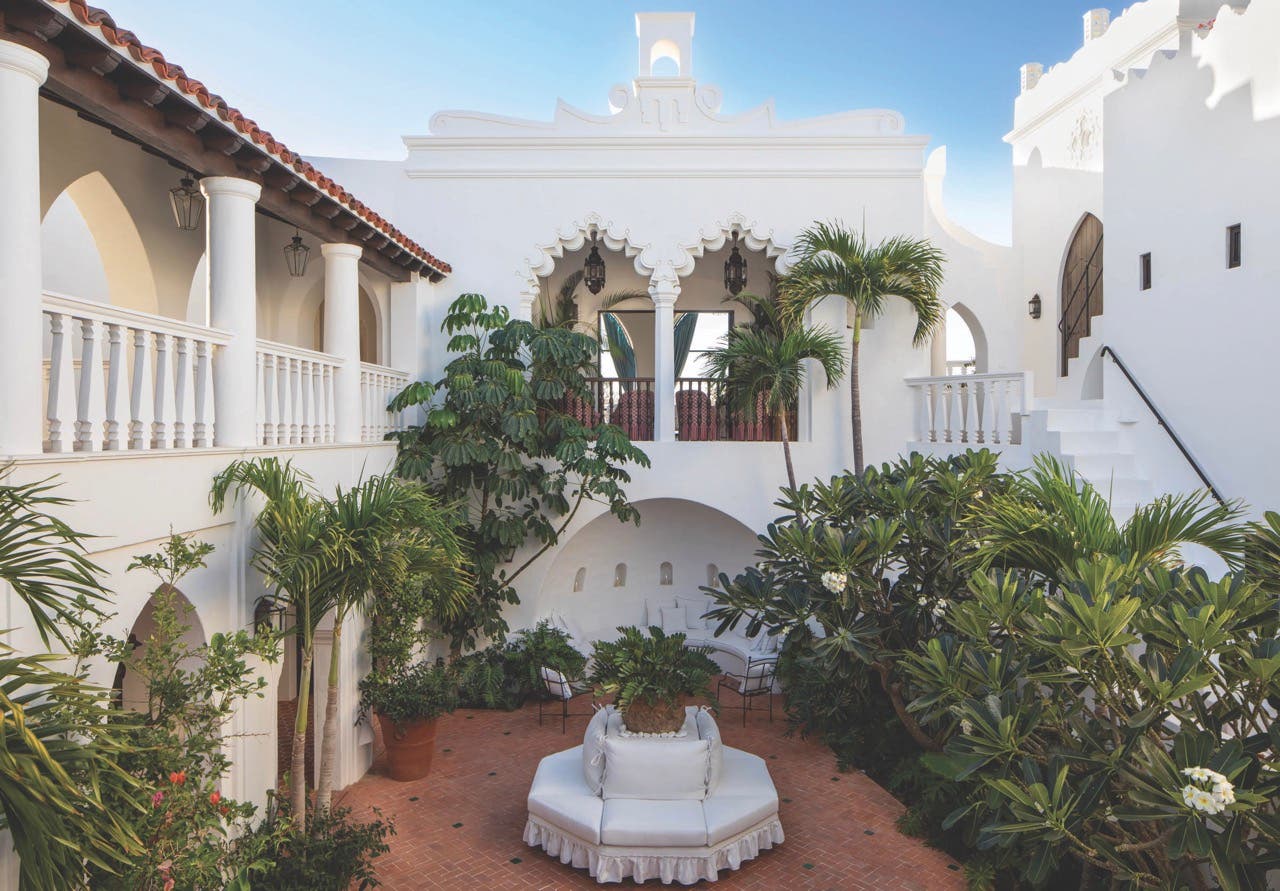


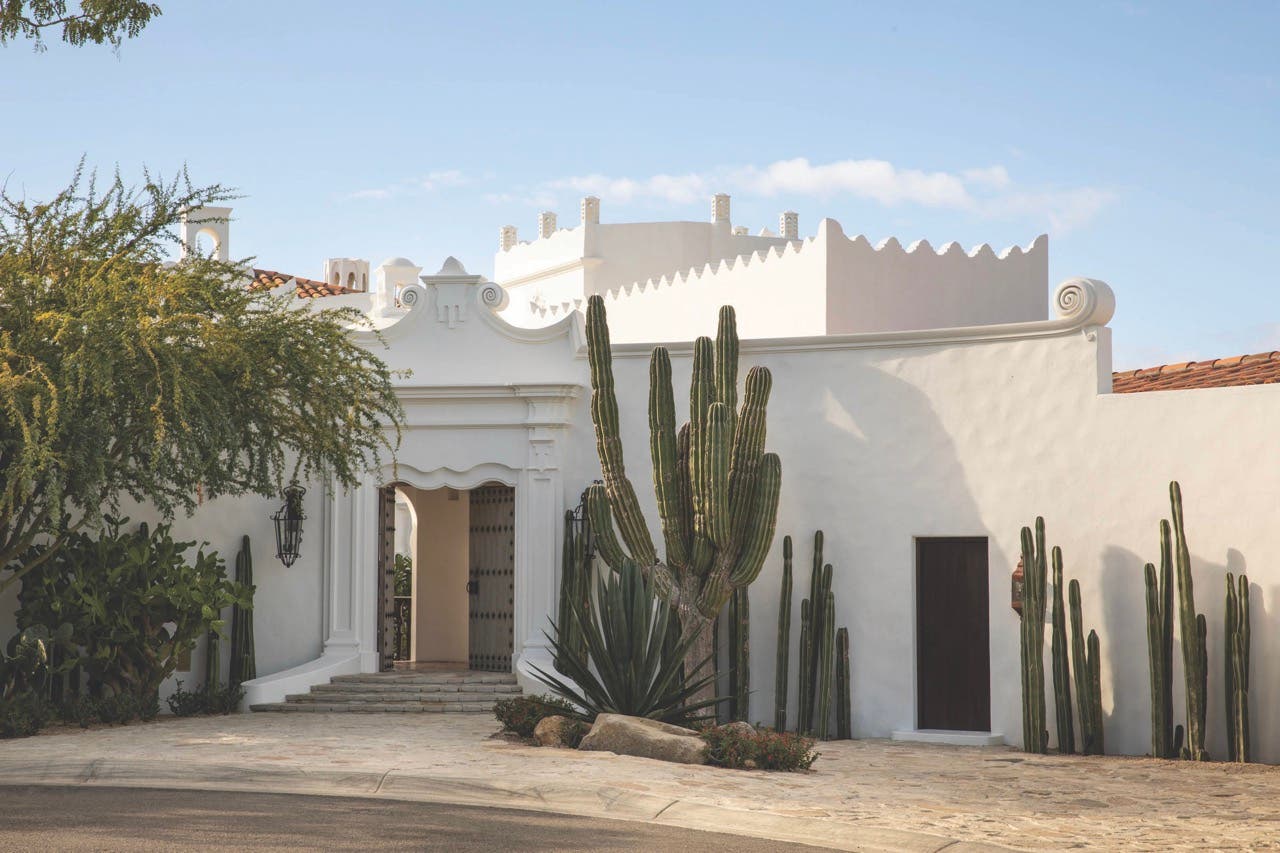

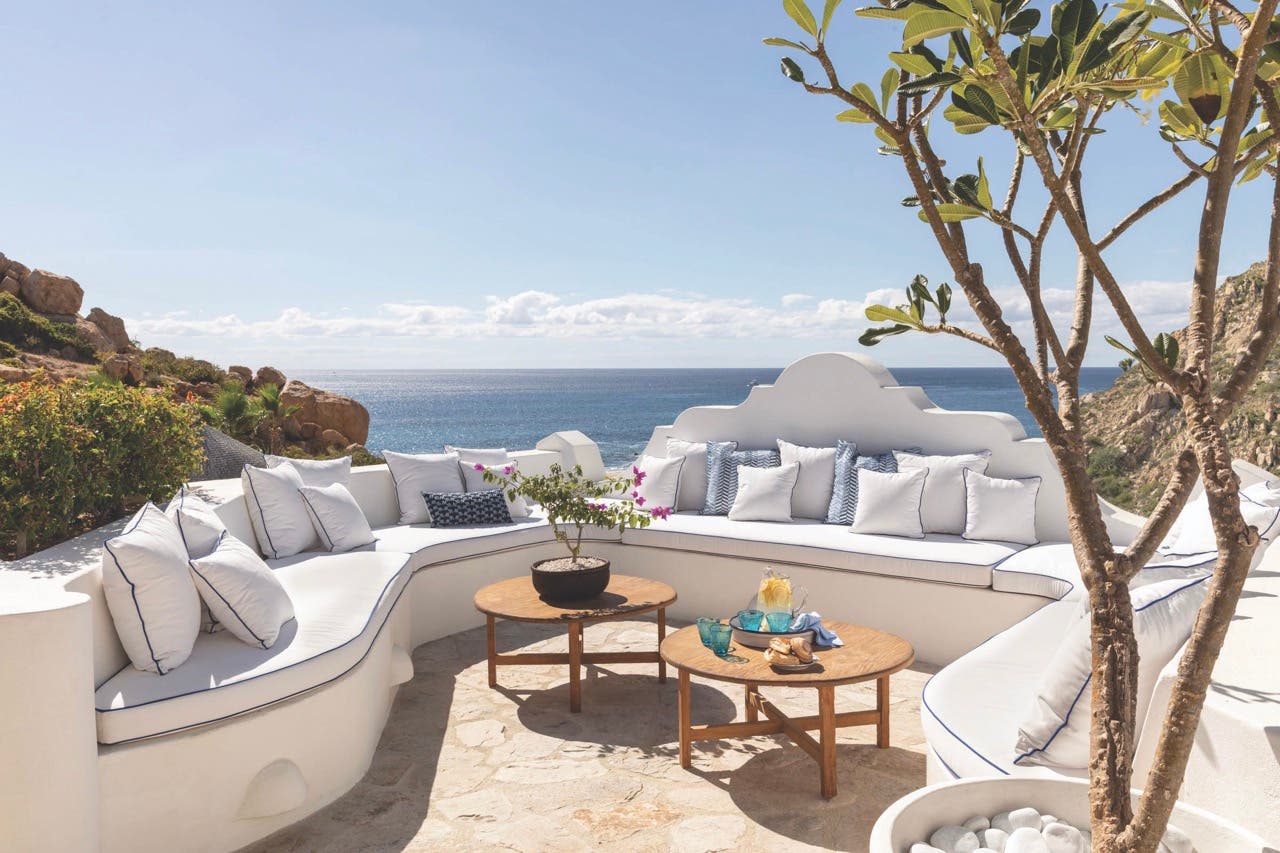
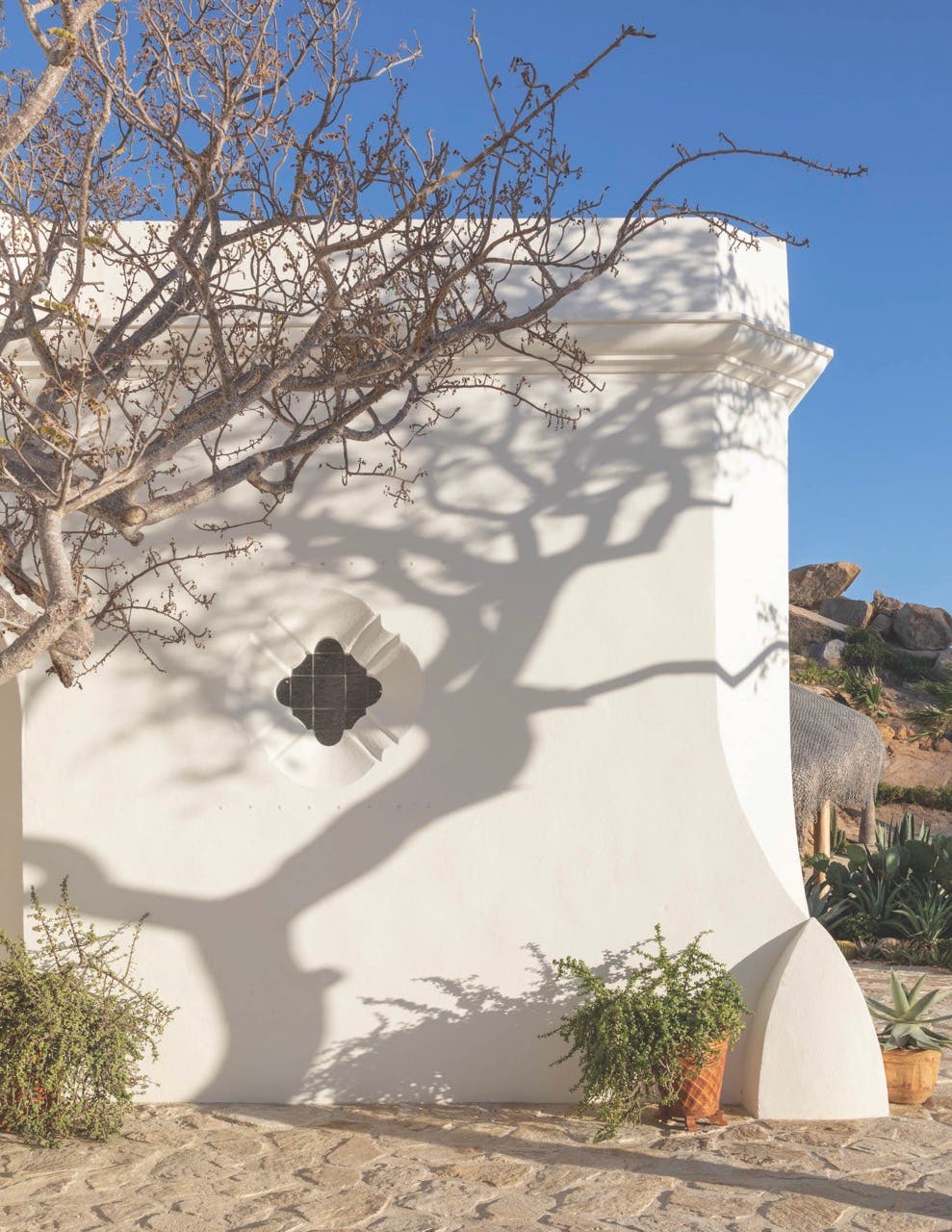


“I’ve long been fascinated with the idea that a staircase is not just a way to transport people,” he says. “Its use is to create the experience of entering, passing through and into, around and on top of spaces and masses, which is exactly what you can do on the pile of boulders, which in my mind are like a playground. I expanded the concept of the staircase to include the whole house.”
Starting at the front gates of the zaguan, the indoor-outdoor spaces Imber created augment his passing-over/passing-through premise as rooms unfurl in and out of each other in a dance of design.
The zaguan leads to a small domed space, which Imber likens to a pulpit, that overlooks the central courtyard, whose lush plantings looks as though they were plucked from the tropics.
“It’s almost like a stage set,” he says, adding that the client liked the idea of a series of experiences.
The experiences continue on the outdoor loggias along the family quarters. An outdoor dining room leads to the central block that contains a formal living room with a kitchen above and an informal family room below.
The primary suite is housed in a tower—the tower, Imber says, was the client’s’ idea—that’s hollowed at the base to contain a grotto and treats the eye to sweeping views of the Sierra da La Laguna Mountains that stretch to the sea. It’s topped by a sunset cocktail terrace.
A second primary suite that looks toward the sea is crowned by a breakfast terrace and a shaded dining pergola that’s connected to the kitchen. A pool stretches toward the view, and a woven palm-roof palapa offers a respite from the desert sun.
Imber’s vision presented a number of challenges that he never anticipated.
Initially, the project didn’t include an HVAC system, but at the beginning of construction, the client decided to add it to the program, which meant finding clever solutions for integrating supply and return ducts and equipment into a solid masonry construction and aesthetic long after the document phase.
In addition to dealing with foreign construction techniques, Imber and his team worked through a Mexican master builder/architect who converted the design documents to metric and helped the team communicate with the Spanish-speaking craftsmen on the ground.
“The larger issue was that recent building trends in Mexico meant the construction industry there was geared toward contemporary and modern construction,” Imber says. “High-end houses, built in the traditional Mexican manner, had not been built in the Baja area for decades.”
Imber and his team had to translate for and train the builder and their craftsmen to work with traditional materials so they could properly execute column moldings, arches, and barrel vaults and other motifs.
Construction, which was poured-in-place concrete and concrete block, required hands-on visual instruction, often using string and other methods to describe compound curves, and full-size site drawings to describe profiles.
“The project being located thousands of miles from our office meant we had to be well ahead of any anticipated potential misinterpretations, especially since concrete construction left little room for mistakes,” he says.
He notes that it was rewarding to see the construction crews take pride in embracing and executing the long-lost craft of their fathers and their fathers before them. TB
| Key Suppliers |
|---|
| Architect Michael G. Imber Architects Contractor/Architectural Liaison Cabo Development S.A. DE C.V. Construction Contractor Mas Proyecto Stone Lantern and Stone Sink Craftsman Antonio Gonzalez Rabago Lighting Consultant/Fabricator Ilumplan – Rodrigo Villalobos Landscape Designer Los Cabos Landscaping –Dan Dixon Interior Design Ken Fulk |



